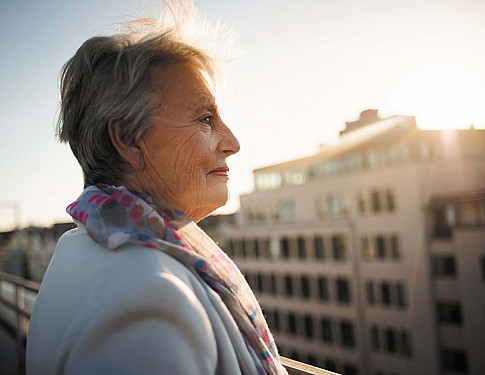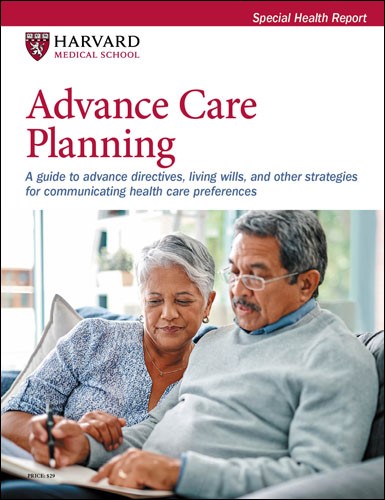3 group housing trends for the 60 and older set
Living together offers benefits for both health and finances.
- Reviewed by Anthony L. Komaroff, MD, Editor in Chief, Harvard Health Letter; Editorial Advisory Board Member, Harvard Health Publishing

The kids are grown, the house is empty, and you (and your partner) are wondering if you'll be spending the next few decades living alone — risking loneliness, social isolation, and chronic health problems. If the prospect is unappealing, you have options — and they're not limited to retirement facilities. Here are three trends to consider.
1. Specialized communities
A specialized community is sort of a private mini-neighborhood with dwellings clustered around common spaces. The units might be individual houses or cottages built around recreational areas, gardens, parking, and a common house for gatherings and planned activities. Or they could be apartments in a tall building with a courtyard and a "common house" on the first floor. The communities are run by the people who live there or by nonprofit organizations. Residents might own their homes or rent them.
There are several different types of specialized communities, such as those that are intergenerational (with a mix of young families and older adults), those only for people ages 55 and older, and those that are mission-oriented — with everyone in the community committed to a shared goal, such as providing stable lives for foster children (children live with young families and interact with older residents regularly).
"These communities might be more affordable than traditional housing. They promote socialization and active involvement with neighbors. People look out for each other and share activities. They might drive a neighbor to a doctor appointment, or maybe help kids with homework. We've heard many reports of people benefiting from the model," says Jennifer Molinsky at Harvard's Joint Center for Housing Studies. She leads research exploring housing challenges for the aging population.
Hundreds of these communities are already established in the United States or are just being built. For more information, visit the Cohousing Association of the United States (www.cohousing.org).
2. Home sharing
For many people, sharing a home with other adults makes good sense: they can take on a boarder, earn money to help pay the bills, and gain instant companionship.
You can find mature boarders through groups such as Silver Nest (www.silvernest.com) or the New York Foundation for Senior Citizens (www.nyfsc.org). The groups help you list your space, conduct background checks on potential boarders, set up leases, and more.
There are also companies that connect you to younger boarders. For example, Nesterly (www.nesterly.com) helps older homeowners rent space at below-market prices to young adults, such as graduate students, who agree to pay rent and help out around the house.
"These engagements can be very meaningful. Students might not know anyone when they get to town, and they find a home and friendship with an older person or couple. For the homeowners, it's someone to help out with chores or share meals with you," Molinsky says.
If you're uncomfortable sharing your home with strangers, consider sharing a home with friends or siblings. You might charge rent, or you could even buy a home together.
Another benefit to living with friends or siblings is sharing the costs of services you both may need, such as private-duty care for help with daily activities, such as dressing or cooking.
3. Residential care homes
If you need more than just part-time assistance and you'd like to live with others in a homey atmosphere, consider a residential care home (or group home). It's set up like a small assisted living facility in a private home that's licensed by your state.
A group home looks like any other house on the block, but inside it has four to 10 residents and qualified staffers available 24 hours a day. Some staffers might live there. Services include assistance with bathing, dressing, meal prep, cleaning, and transportation.
Each resident typically has a private or shared bedroom and bath. There are also common areas such as a kitchen and living room. The setting naturally invites socializing, friendship, and quality time with others.
Costs are similar to assisted living (starting at $3,000 per month, depending where you live), and are based on the amount of care you need.
Keep in mind
Don't wait to figure out your future housing. "Look ahead. Think about what you might need and want in the future, including opportunities for socializing, help around the house, or added income," Molinsky says. "Consider your finances and your circumstances, and start investigating while you have time to plan. It's best to be proactive."
Image: © Ems-Forster-Productions/Getty Images
About the Author

Heidi Godman, Executive Editor, Harvard Health Letter
About the Reviewer

Anthony L. Komaroff, MD, Editor in Chief, Harvard Health Letter; Editorial Advisory Board Member, Harvard Health Publishing
Disclaimer:
As a service to our readers, Harvard Health Publishing provides access to our library of archived content. Please note the date of last review or update on all articles.
No content on this site, regardless of date, should ever be used as a substitute for direct medical advice from your doctor or other qualified clinician.
















